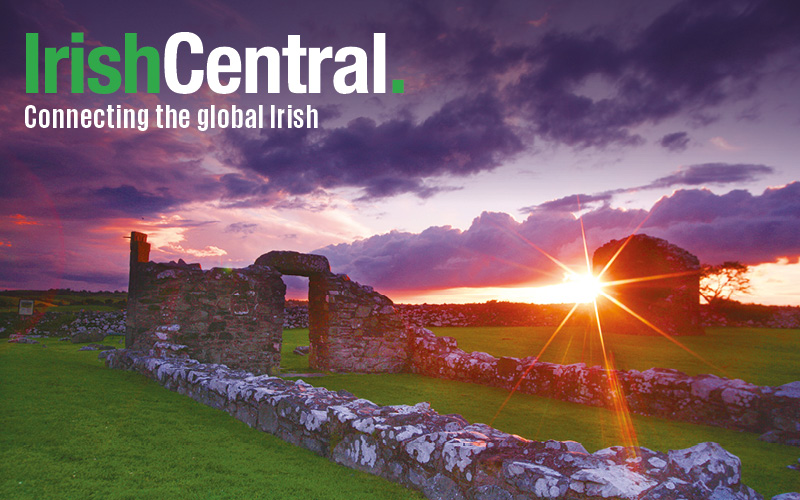The northern-most province of Ulster contains a diverse array of cultures and sites, which, combined, tell the tale of modern Ireland, a place of history, pluralism and an evolving culture. Ulster is divided into nine counties including the six that comprise Northern Ireland: Antrim, Armagh, Down, Fermanagh, Londonderry and Tyrone, as well as Cavan, Donegal and Monaghan of the Republic. In Ulster lies the largest freshwater basin in Ireland, Lough Neagh, which shares its borders with five of the nine Ulster counties. Just east of the massive lake is the contrast of youthful, urban Belfast, the second largest city in Ireland. With a jagged coast that travels from the Atlantic up to the Northern Channel and ends in County Down at the Irish Sea, Ulster has no end of historical sites and vibrant communities all in a landmass little more than one-sixth the size of New York State.
Antrim
Among the most stunning of Ireland’s geological wonders is the Giant’s Causeway, located in County Antrim, which houses Ulster’s northeast coast. The Causeway, a series of over 40,000 interlocking basalt columns, mostly hexagonal though some have as many as eight sides, are a natural phenomenon resulting from volcanic eruptions. A simultaneously awe-inspiring and eerie locale, at its feet beneath the surfaces of the Northern Channel lie infamous shipwrecks of the Spanish Armada. The site is perhaps the greatest tourist draw in Ulster, and its endless contributions to folklore and myth inspire the imaginations of its stream of yearly visitors. The luxurious Bushmills Inn Hotel offers an ultimate experience in the heart of Northern Ireland’s Causeway Coast.
Further inland in Antrim is the birthplace of the Irish linen industry in the city of Lisburn. Rich with historical tales including one of negotiations between Ben Franklin and Lord Hillsborough before the American War of Independence, Lisburn is now a growing city with extensive shopping centers and leisure activities as well as museums which detail the growth of linen into what would become an essential form of Irish industry.
A new buzz has been surrounding Belfast in the last decade as the city attracts tourism with its famed shopping centers, multiple tourist attractions and places to stay. The Titanic’s Dock has certainly had a hand in drawing tourists. Here visitors explore the city’s history with the ill-fated ship. The Samson and Goliath cranes, the Hospital Tower Block, The King’s Hall and the Stormont Parliament Buildings are all within the Belfast traveler’s grasp, along with all the perks of metropolitan entertainment. There are many wonderful places to stay in the city including Merchant Hotel, an incredible historic five star property within Belfast City Center.
Armagh
Celebrating the extensive reaches of the great Lough Neagh and its richly forested adjacent lands, on the southern edges of the lake in County Armagh is the Oxford Island Discovery Centre. Its picturesque location makes the Centre’s cafes and meeting rooms an idyllic scene for visitors. Among its several attractions is the Kinnego Marina, the largest marina on Lough Neagh, where skippered boat trips and expert instruction in sailing and powerboating are offered by fully qualified staff. Accommodation on-site includes a 30-bed hostel and a camping and caravan park which offers tours to Coney Island, the only inhabited island on Lough Neagh, believed to have its first human settlers as far back as 8000 B.C. The Nature Reserve cannot be missed by environmentalist and wildlife-lovers. The Centre has year-round festivals and exhibits about subjects ranging from the local insect life to the legends of Finn McCool.
Just on the edges of the city of Armagh, atop the hill Ard Macha, is the Cathedral of St. Patrick. It is on this site in the year 445 that it is believed St. Patrick built his church. The original structure suffered a series of destructive events at the hands of Vikings, lightning strikes, and fires, but what stands today is a stunning architectural work begun in 1834. Its many restorations have not detracted from the rich, ancient spiritualism that many flock to experience atop the hill.
Cavan
Originally part of the Connacht province, County Cavan became recognized as a piece of Ulster in 1584. While the boggy terrain of Cavan has resulted in a rather rural setting, the numerous lakes are a fisherman’s delight. The Dun Na Rí Forest Park is not only a canvas of unusual natural sites, but the paths through its forests and monuments are lined with legends of battles and myths of giants. Cromwell’s Bridge is just one such structure nestled in the forested landscape that calls to the ghosts of Cavan’s rich history.
Milltown is a small town located in Cavan which serves as a unique anchor for tourists as they travel to the outskirts of this homely village to explore the ruins that surround it. The Monastery, Abbey, Church and Round Tower of the Drumlane are situated just beside Milltown. The massive stone structures date back as far as 555 AD. A number of saints are believed to have roamed Drumlane, and imprints in stones nearby a well are said to be the knees of St. Mogue.
Londonderry
The walled City of Derry is a bustling hub of activities for travelers. Its placement near the open seas tucked within the hilly countryside of the county makes the aesthetic of the city truly stirring. Its walls provide visitors and inhabitants with a unique architectural piece of history standing strongly against the foreground of a modern city hum. Tower Museum guides visitors through the city’s history including the shipwrecks that brought Spaniards in the 16th century. St. Columb’s Cathedral, built in 1628 and consecrated in 1634, was the first Protestant cathedral to be constructed in Europe since the Reformation. The cathedral houses the earliest church bell in Ireland and many relics of the 1688-1689 city siege; the cathedral’s stained glass windows depict scenes from the siege. The Museum of Free Derry is an archive focusing on the civil rights era of the 1960s and the Troubles of the 1970s.
Donegal
With the stunning backdrop of the Bluestack Mountains and the views of the Atlantic horizon just beyond Donegal Bay, this northwest county is celebrated for its natural beauties and thriving village communities. Donegal is home to the breathtaking Slieve League, the highest sea cliffs in Ireland. Another environmental draw is the more easily accessible Bluestack Mountain Range, just six miles outside of Donegal town. There are multiple golf courses and nature reserves to explore in Donegal, and the craft-fairs of the local towns are unrivaled in their authentic charm.
Down
One simply cannot thoroughly explore the history of St. Patrick firsthand without visiting County Down. It is home to some of the most famed sites of this saint’s fabled journey, from his landing there to what is believed by many to be his burial site in the walls of the Downpatrick Cathedral. Travelers can also visit the Struells Wells, a series of four wells little over a mile outside of Downpatrick. It is there that, as the story goes, Patrick dipped himself into the icy waters at night singing and praying to build his self-discipline. The wells are still visited frequently today by people seeking healing powers from the flowing waters.
The Mourne Mountains are considered the most picturesque in the country. The site has become a favorite of adventure seekers and those new to hiking alike. The range is home to the highest peak in Ireland, Slieve Donard (the Slieve Donard Resort and Spa hotel is a favorite with tourists) as well as the Hare’s Gap, a sharp mountain pass which serves as a launching point for walking tours and expeditions up the treacherous terrain. Cyclists, horseback riders, hikers and climbers find their way to Mourne to experience this natural playground.
Fermanagh
The best new talent in golf, Rory McElroy is the pro at the spectacular Lough Erne Resort and Golf Club in Fermanagh. This county also offers some of the best fishing and watersports in all of Ireland, and situated on the banks of Loch Erne, the county town of Enniskillen is a friendly stop for visitors interested in the heritage sites that are scattered throughout this historically rich county. The Enniskillen Castle houses museums dedicated to telling the story of the castle as a stage for the rebellion efforts of the 16th century. The cultural heart of the town itself beats strongly with the Clinton Centre standing in remembrance of those killed in the Troubles, while the Ardhowen Theatre lodges famous musical acts, opera, ballet and numerous other forms of entertainment.
Monaghan
It could be argued that whoever coined the term “rolling hills” was picturing County Monaghan, which is in many areas a stretching green landscape riddled with market towns and craft-making centers. Hope Castle resting in the countryside of Monaghan is an 18th-century building on the site of what was once Blayney Castle in the town of Blayneycastle. This castle, surrounded by moats and perfectly combed gardens and known for its pink apple blossoms, is a unique site which has visitors flocking to stay in the castle in spring months.
To the west in Monaghan is the unique Annaghmakerrig House in the village of Newbliss. The former home of theatrical producer Tyrone Guthrie has been converted into an estate for writers and artists to complete work. The draw to this place for the bohemian crowd has resulted in the Flat Lake Cultural Festival, usually held the third weekend in August, which is an energetic and eccentric celebration of poetry, music, literature and more.
Tyrone
The name Tyrone is derived from the Irish Tír Eoghain meaning “land of Eoghan.” This Eoghan was son of Niall Noigiallach or “Niall of the Nine Hostages,” the legendary king thus named for leading raids on Britain and the European mainland. Saint Patrick was said to have been kidnapped and brought to Ireland as one of his hostages during his raids. Researchers indicate that there could be as many as three million descendants of Niall alive today. Most of his descendants are concentrated in northwest Ireland, an area where DNA testing has shown that one in every five males has inherited his Y-chromosome.
The largest town in County Tyrone is Omagh, which makes a great base for exploring the surrounding areas, including the picturesque Gortin Glen. The nearby Ulster-American Folk Park, one of the country's best museums, chronicles the journey of Irish emigrants with staff in period costumes, reconstructed period buildings and even a tall ship much like those taken by the America-bound Irish. The vast project recreates that experience for many to walk through similar steps that their ancestors took centuries ago.




Comments